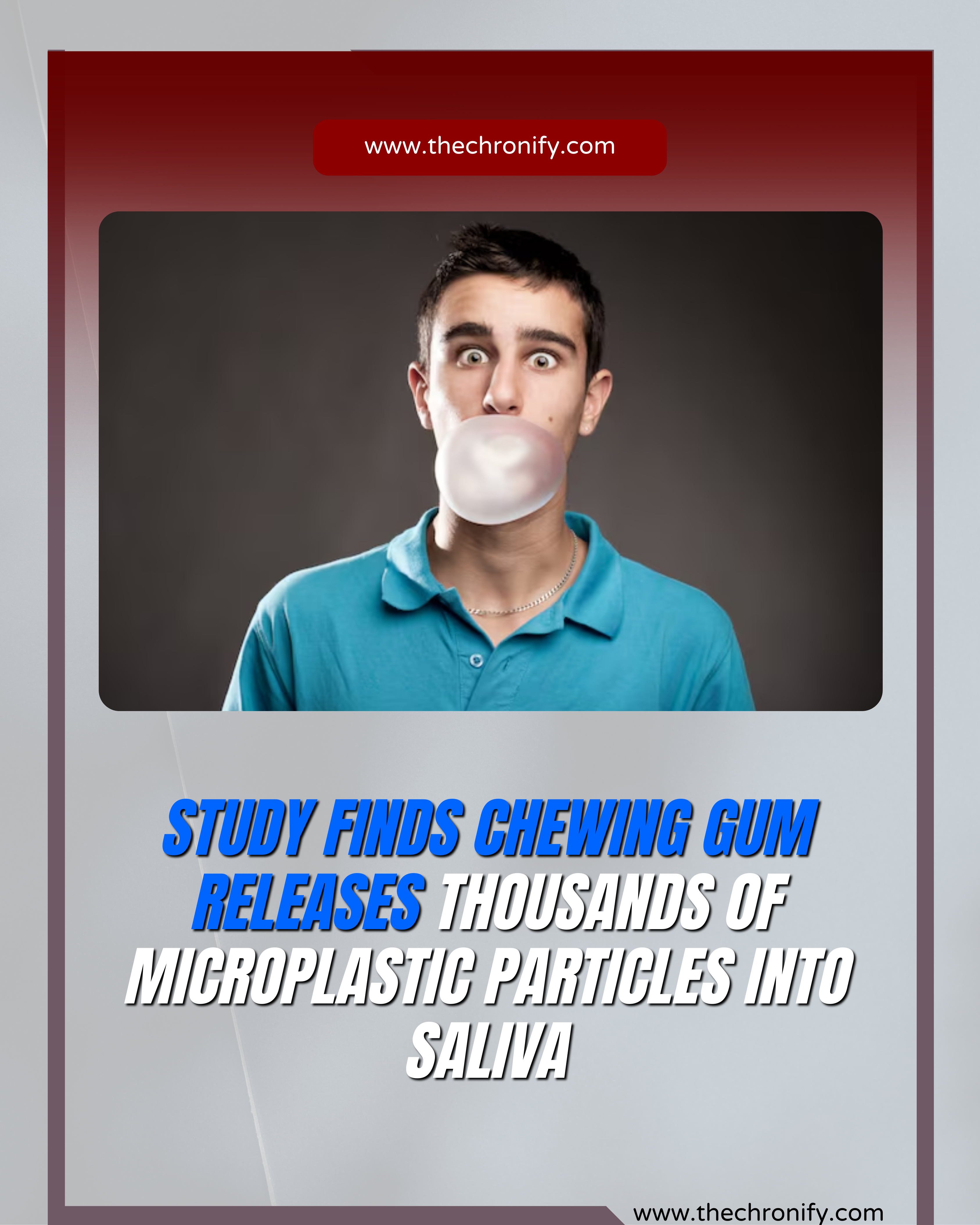New Study Reveals Chewing Gum May Be a Hidden Source of Microplastics
Plastic pollution has become an inescapable part of modern life. From kitchen sponges to clothing and cutting boards, microplastics — tiny plastic particles less than 5 millimeters in size — are turning up in countless household items. Now, researchers are adding a surprising new source to the list: chewing gum.
A recent pilot study conducted by scientists at the University of California, Los Angeles (UCLA) has found that chewing both natural and synthetic gums can release hundreds to thousands of microplastic particles into saliva, which may then be swallowed. The findings were presented at the American Chemical Society’s Spring 2025 conference, a major science gathering that features thousands of presentations across a wide range of fields.
“Our intention isn’t to scare people, but to raise awareness,” explained Sanjay Mohanty, the lead researcher and an engineering professor at UCLA. “We already know we’re exposed to plastic daily — we wanted to examine whether chewing gum contributes to that exposure.”
While the full impact of microplastics on human health remains unclear, studies on animals and human cells have raised red flags, suggesting that these particles may cause harmful effects. Until more definitive research emerges, experts suggest taking proactive steps to minimize exposure.
Despite the widespread popularity of chewing gum across the globe, there has been limited investigation into whether gum contributes to microplastic intake. That prompted Mohanty and Lisa Lowe, a graduate researcher at UCLA, to conduct this study and find out just how much plastic might be ingested through this seemingly harmless habit.
Gum, whether marketed as natural or synthetic, typically contains a chewy base made from either plant-derived substances (like chicle or sap) or petroleum-based plastics. The researchers hypothesized that synthetic gums would release more microplastics due to their plastic content. However, the results were surprising.
The team analyzed five brands of synthetic gum and five brands of natural gum. Each sample was chewed for four minutes by the same individual to reduce variability. Saliva was collected at 30-second intervals, and a final rinse was also analyzed to capture any lingering particles. The researchers also tested gum chewed for 20 minutes to observe the long-term release pattern.
Under lab conditions, the samples were tested using a combination of microscopy and Fourier-transform infrared spectroscopy (FTIR), a technique that identifies specific polymers. The results revealed that, on average, each gram of gum released around 100 microplastic particles — though some reached as high as 600. With a standard piece of gum weighing 2–6 grams, a single chew could lead to ingesting up to 3,000 plastic particles.
Extrapolated over a year, for someone who chews around 160 to 180 sticks of gum annually, that’s potentially 30,000 microplastic particles entering the body — solely from gum.
Even more unexpectedly, both natural and synthetic gums released similar quantities of plastic particles. The types of polymers found — including polyethylene, polypropylene, polystyrene, and polyethylene terephthalate — are common in various forms of packaging and synthetic products. These results suggest that even “natural” chewing gum may not be free from plastic content.
Most of the microplastic release occurred during the first two minutes of chewing. Mohanty pointed out that the friction of chewing — not saliva enzymes — was responsible for the particle release. Within eight minutes, nearly all the microplastics that would be released had already been dislodged.
“If you’re trying to limit your exposure, it might be better to chew one piece of gum longer, rather than frequently switching to fresh ones,” suggested Lowe.
Due to technical limitations, the study only detected plastic particles 20 micrometers or larger. The researchers believe that even smaller particles — potentially nanoplastics — are also being released but went undetected in their analysis. Further studies are needed to explore this possibility.
Beyond personal health concerns, the environmental implications of improperly discarded gum are also troubling. “People need to think twice before sticking their gum under a table or spitting it onto the street,” Mohanty warned. “Chewed gum that ends up in the environment becomes just another form of plastic pollution.”
The research was supported by UCLA and the University of Hawaii’s Maximizing Access to Research Careers (MARC) program, with funding from the National Institutes of Health and the California Protection Council.
As the conversation around plastic pollution grows, studies like this one highlight the importance of examining all the seemingly small choices we make — even something as simple as popping a piece of gum.

